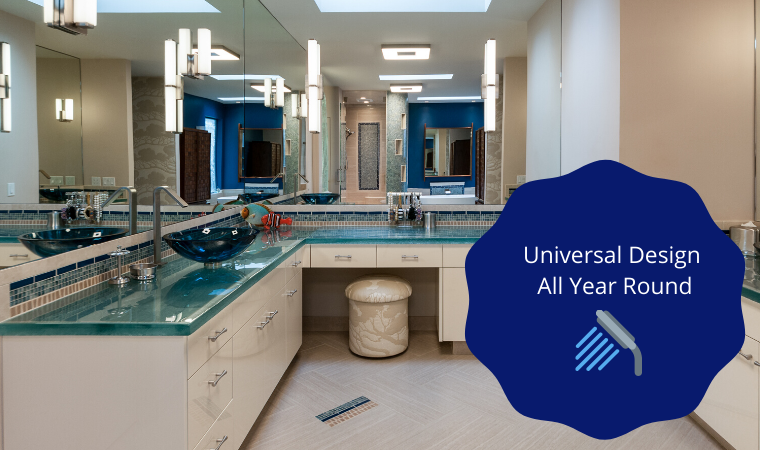Table Of Content

Universal design is based on principles, and has guidelines that allow organizations to be tested and rated for certain levels of accessibility. It’s this sort of system that moves universal design from an idea into a concrete subset of UX. The properties panel has been redesigned to give you more intuitive control over the tools.
UX Booth
Universal design has a similar goal; to offer everyone the same chance to enjoy your product or service, regardless of ability. One example of universal design implemented in architecture was creating a no-step entry to buildings. This eliminated the usage of stairs by using ramps, which could be accessed by everyone. Use legible fonts, sufficient color contrast, and appropriate font sizes to ensure readability, and avoid text-heavy paragraphs by breaking content into digestible chunks.
Keyboard Accessibility
Universal design is often mentioned (or confused) with related concepts like accessibility and inclusive design. While accessibility refers to designs that specifically accommodate those with physical and cognitive disabilities, universal and inclusive design go beyond that. They are both concerned with meeting the needs of as many people as possible no matter their characteristics or identities. When bringing in ideas to the table, make sure they follow the principles of universal design by being respectful of diversity, being risk–free and having seamless functionality. The solutions have to be viable, effective and provide an opportunity to your users.
Get support
Several leading standards and guidelines underpin accessible, universal web design. Adopting these practices systematically removes barriers for diverse users. On the other hand, Sketch is not built to handle the complex textures and effects of Photoshop. It’s also completely vector-based—it still displays raster images like photographs, but creating or editing those graphics has to be done in a separate raster editor. Despite this, its ease of use and web-friendly focus has more than few web designers swearing off Photoshop for good. Adobe Photoshop is one of the oldest and most well-known web design software on the market.
Basically, it’s about creating websites that are accessible to users with different abilities and needs. Once you understand how it works, you can incorporate it into your site to create a more inclusive user experience. By understanding these universal principles of design, we can create physical and digital spaces and products that are more accessible and user-friendly for all users. Today, Universal Design stands as a beacon of inclusivity and has now expanded its reach far beyond architecture. Today, universal design principles do not only encompass building ramps or wider doorways, it’s a comprehensive design philosophy spanning public services, digital products and everything in between. Barrier-free design—also called accessible design—aims to remove any obstacles between its users and its products when in use.
11 Best Adaptive Clothing Brands for People with Disabilities - Good Housekeeping
11 Best Adaptive Clothing Brands for People with Disabilities.
Posted: Thu, 29 Jun 2023 07:00:00 GMT [source]
The Affinity Designer is a cheaper alternative to illustrator, which is especially suitable for someone who is in the early stage of design career. The software is known to work smoothly, which can improve your workflow and make you express your creativity more freely. You can move and zoom your artwork at 60fps; see the gradients, effects, and adjustments changing live along with the transforms and curve edits. Get a Pixpa Design Expert to build your website for you, saving you time and effort. Private chef and cookbook author Mikaela Reuben uses a looping video as the site’s featured image to quickly engage a visitor and introduce us to Reuben right away. Consistently styled food photography throughout the site does more than make your mouth water; the careful images also contribute to the brand’s warm, muted aesthetic.
Pixel-based graphic design software have long been the gold standard for web design. These programs allow you to organize page elements into layers that are then separated and implemented by developers. They are also capable of higher-fidelity design work, built from scratch. Because these programs are used for many other projects besides web design, the creative possibilities are endless—but users must know ahead of time what graphics will and won’t work online. Legal requirements are a critical starting point for factoring accessibility into your decision-making, but these requirements are only the beginning. Accessibility is about real people who use your services — it’s usability for the broadest possible audience regardless of how they engage with your content.
This principle considers aspects of design that reduces the physical strain on users, particularly those with limited mobility or physical disabilities. In digital spaces, this could mean designing interfaces that can be navigated with minimal physical effort, such as keyboard-friendly designs and touch-screen friendly controls. These are just a few examples of how Universal Design principles create a more inclusive and accessible digital world.
The Role of Responsive Website Design and Management Services
In turn, it’s also good for TED as they reach more users and increase their popularity. It’s a win-win situation for both the users and the companies or organizations we design for.© TED Conferences, LLC., Fair Use. Whether it’s communicated via text, pictures, audio or videos, make sure the information is easy to digest and access. When you incorporate this principle into your design, start with your users.
That said, its vast capabilities can overwhelm new users who want more than just filling in a theme, and at times its interface isn’t the easiest to navigate. In this article, we’ve rounded up our top picks for the best web design software to make your shopping experience that much easier. For each web design software, we list the price, pros/cons, whom it’s recommended for and everything else you need to make the best final decision. This update will focus specifically on addressing systemic barriers that result in inequitable learning opportunities and outcomes. CAST aims to develop a transparent, inclusive, and community-driven process. If you are interested in collaborating and staying updated on our progress, we invite you to complete a brief survey.

Text alternatives, such as captions and transcripts, can help make multimedia more accessible. Allow the user to control the playback and pausing of audio and video. But the best universal design website fundamentally reshapes how we envision users in the first place – as wonderfully diverse.
Flexibility and adaptability are fundamental universal design principles. So, aim to create an interface that accommodates different user preferences and abilities. These can include features such as adjustable font sizes, customizable color themes, and multiple navigation options.
However, failing at putting your best foot forward with your design portfolio can lead to rejects and spell doom. Davis notes that drag-and-drop website builders such as Squarespace and Wix are intentionally set up for non-coders, while WordPress is a better fit if you want to heavily customize. Girlboss builds community through content and monetizes through an online shop of “Girlboss approved” products from partner retailers and creators. This site, built on Shopify, facilitates the complexity of an online shop while managing to feel community-oriented. The design puts content front and center, with graphics that incorporate original and stock photography with modern feminine design to showcase the brand’s personality. Yes, a responsive design is essential for accessibility and ensuring that your site can adapt to any screen size.
They provide consulting, technical, and research services, as well as lectures, workshops, and conferences to promote education on universal design. We would be remiss not to highlight the variety of guidelines and techniques provided by W3C. When we take the time to look at these steps and think about where the user is, we also consider what he’s thinking, and how he’s physically moving, speaking to, or tapping the screen. That takes us to another level of empathy, which is easier to access and feels more tangible than when we stop at personas (great though personas are!). A well-defined user flow adds a level of context, and brings us one step closer to universal design.

No comments:
Post a Comment